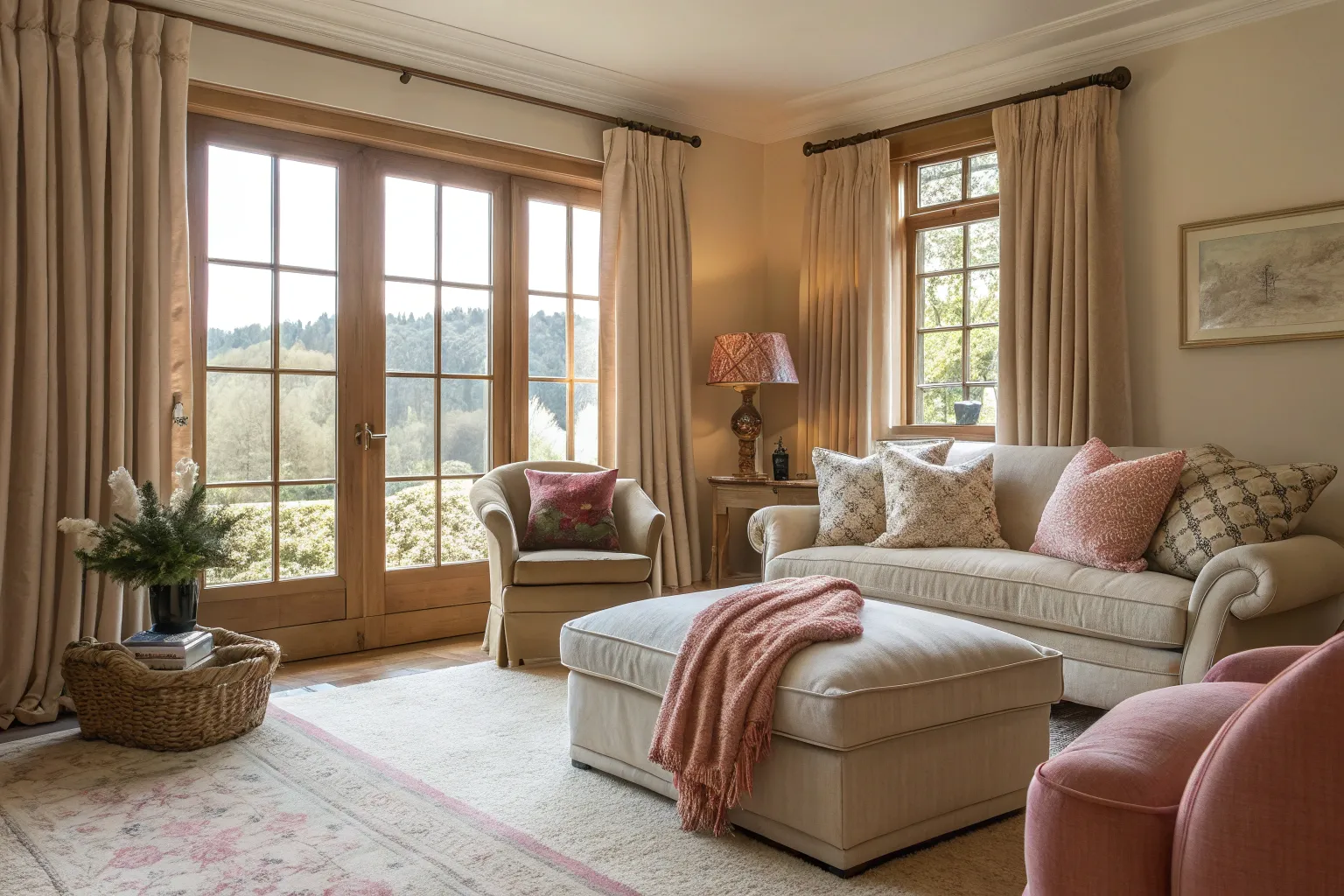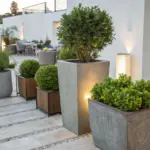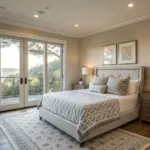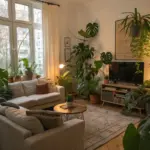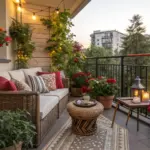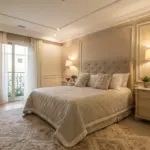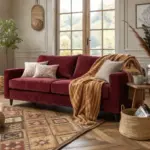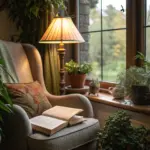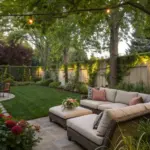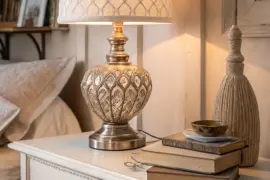Making a space feel finished without putting a single nail in the wall is entirely possible. These five styling strategies transform empty rooms into welcoming environments through thoughtful placement, layering, and intentional design choices that require zero hardware installation.
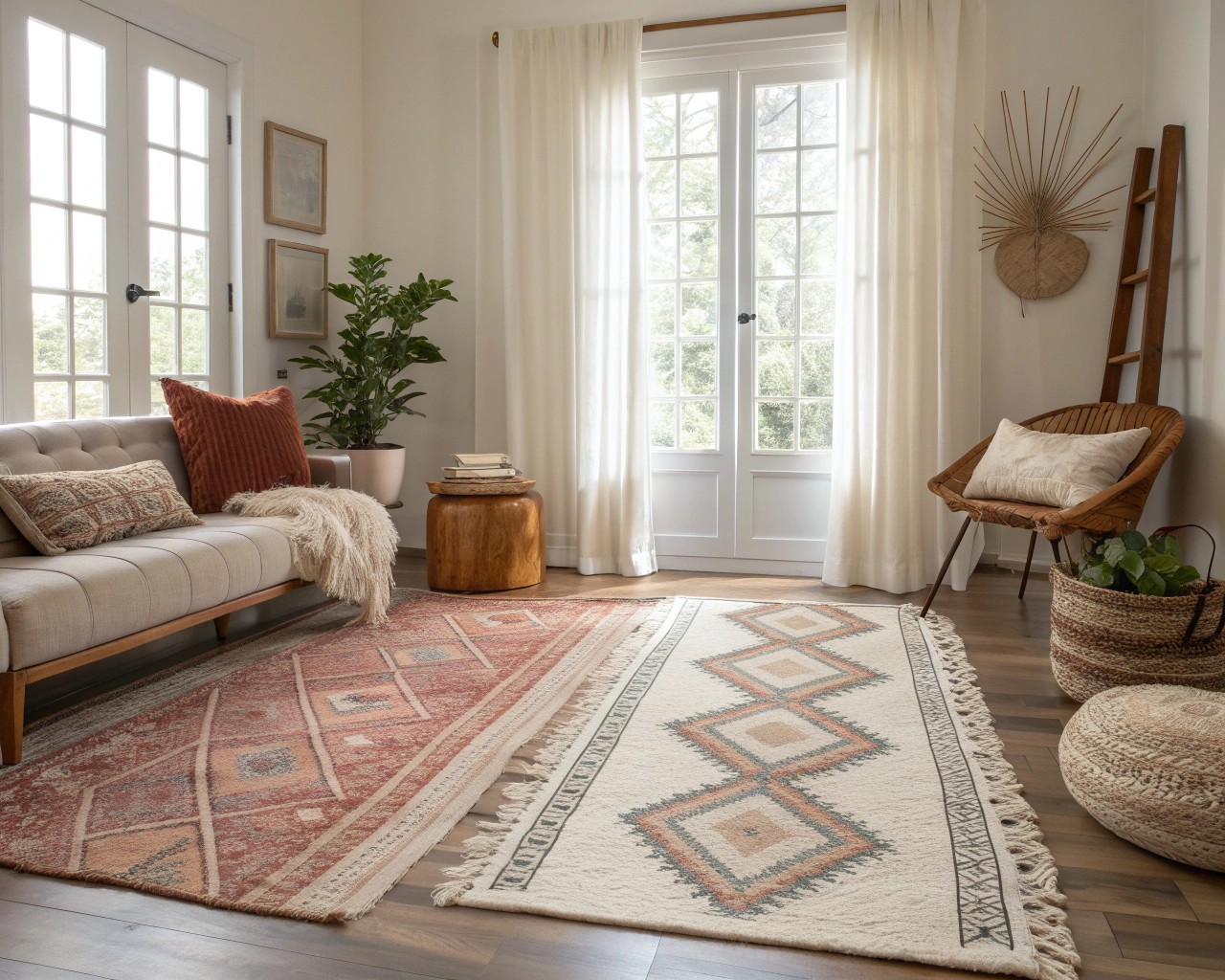
Area rugs serve as one of the most effective tools for defining spaces without permanent alterations. Beyond their decorative appeal, these versatile textiles anchor furniture groupings, absorb sound, and create distinct zones within open floor plans.
Understanding Proper Placement
The relationship between your rug and furniture determines how cohesive a room feels. In living areas, position rugs so that at least the front legs of seating pieces rest on the textile surface. This approach draws furniture into visual alignment while maintaining an intimate, comfortable arrangement. For smaller rugs or compact rooms, allow the rug to serve as a focal point with furniture arranged around rather than on top of it.
Leave 18 to 24 inches between the rug edge and walls to maintain proper proportion. This breathing room prevents spaces from appearing cramped and allows the rug to define the conversation area rather than simply covering floor area.
Creating Conversation Zones
The concept of proxemics—the study of personal space—suggests that comfortable conversation occurs within a 7- to 10-foot diameter circle. When all seating falls within this zone, natural dialogue flows easily. Use your area rug to delineate this circle visually, ensuring that conversation-area furniture maintains 16 to 18 inches between the sofa and coffee table.
In larger spaces, consider layering techniques. Place a smaller patterned rug over a larger natural-fiber base like jute or sisal to add dimension without committing to wall-to-wall coverage. This layered approach works particularly well when you want visual interest but haven’t yet determined your long-term design direction.
| Rug Placement Strategy | Best For | Key Benefit |
|---|---|---|
| All furniture on rug | Large spaces, cohesive layouts | Creates unified, grounded feeling |
| Front legs only on rug | Medium-sized rooms | Balances intimacy with openness |
| Furniture around rug | Small rooms, statement rugs | Maximizes open feel, showcases rug |
| Layered rugs | Rental spaces, evolving design | Adds depth without permanence |
Material Considerations
Natural fibers like wool, jute, and sisal offer durability for high-traffic areas while providing textural contrast against hard flooring surfaces. Peel-and-stick carpet tiles and vinyl planks provide temporary solutions for renters seeking more dramatic floor transformations. These products use removable adhesive that leaves no residue, allowing complete removal when circumstances change.
2. Freestanding Furniture as Display and Structure
Strategic furniture placement creates architectural interest and functional storage without touching walls. Leaning, layering, and thoughtful positioning transform standard pieces into dynamic design elements.
Leaning Mirrors and Art

Floor mirrors leaned against walls provide both function and visual expansion. These substantial pieces create the illusion of increased square footage while reflecting natural light throughout the space. Position large-format mirrors behind furniture pieces like sofas or console tables to add depth and a layered, collected appearance.
The casual lean creates an unexpectedly sophisticated effect when paired with ornate frames. Choose frame colors that contrast with wall tones—chalky white against soft gray, or bold metallics against neutral backgrounds—to maximize visual impact. For windowless spaces, arrange mirrors to suggest architectural openings, flanking them with potted plants to enhance the illusion of connection to the outdoors.
Console Tables and Surface Styling
Console tables function as versatile platforms throughout the home. In entryways, pair them with leaning mirrors to create welcoming vignettes that establish your design aesthetic immediately. Behind sofas, they provide display surfaces that add visual weight to floating furniture arrangements while offering practical storage for everyday items.
I’ve found that successful console styling follows a reliable formula: anchor with height through tall lamps or vases, layer depth by mixing object sizes and textures, maintain function with trays or catchalls, and ground the look with baskets on lower shelves. This balanced approach creates curated displays that feel intentional rather than cluttered.
Quick Styling Formula:
- Anchor point: Leaning mirror or large artwork behind the console
- Height elements: Lamps (placed in pairs for symmetry) or tall vases
- Mid-level layers: Stack of 3 decorative books topped with a small object
- Functional pieces: Decorative bowl or tray for keys and daily essentials
- Lower level: Woven baskets for hidden storage
Freestanding Shelving and Display Units
Bookcases and étagères serve double duty as room dividers and display surfaces. Position these pieces perpendicular to walls to create separate zones within open layouts—effectively carving a dining area from a living space or establishing a home office corner. Choose units with finished backs so they remain attractive from all viewing angles.
When styling shelves, alternate between shelves filled edge-to-edge and those featuring two distinct groupings with negative space between. This rhythm gives the eye places to rest while maintaining visual interest. Incorporate varying heights—tall plants, vertically positioned frames, and substantial decorative objects prevent the “cluttered knickknack” effect.
3. Textiles and Soft Layers
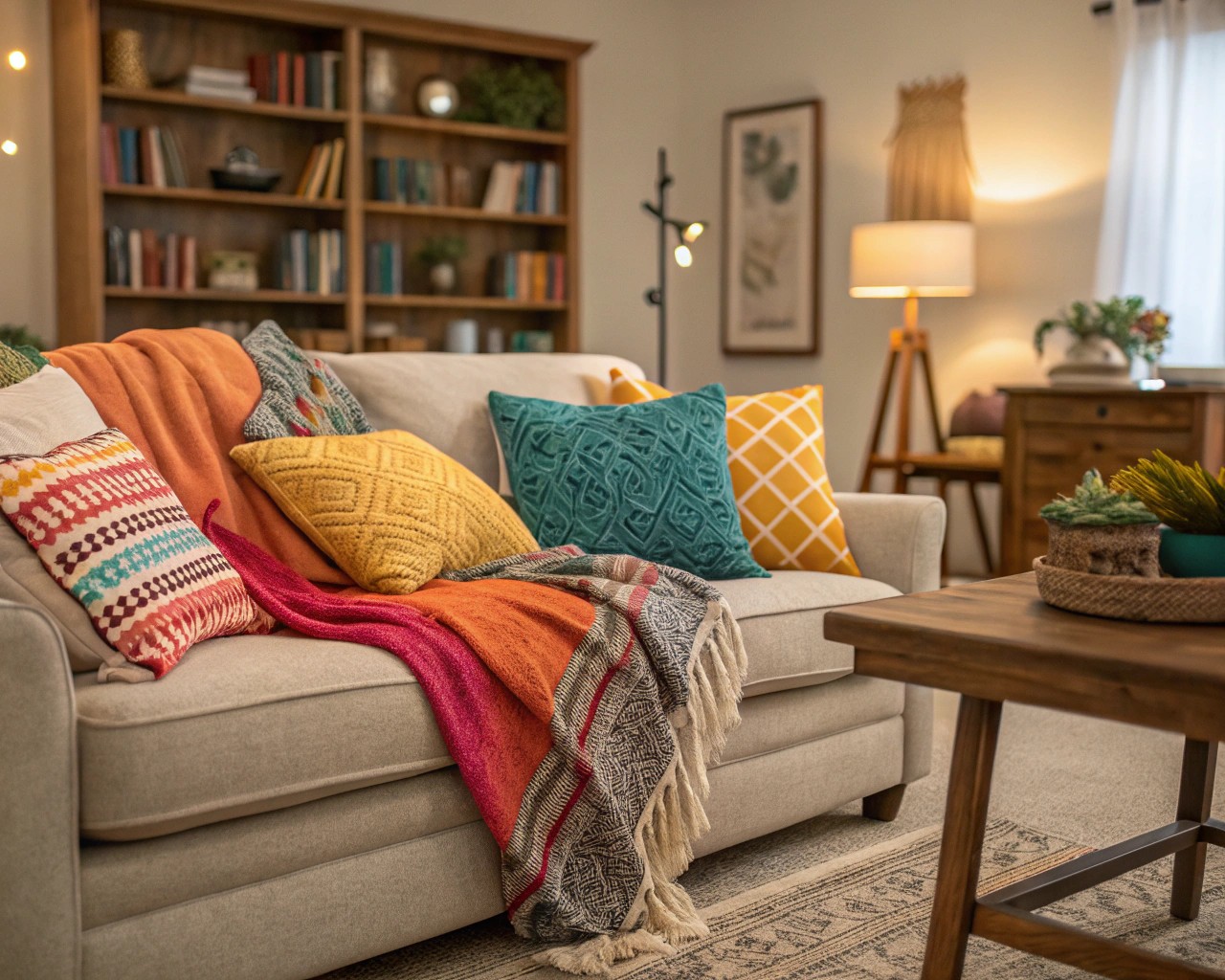
Textiles instantly transform spaces from sparse to inviting through strategic draping, folding, and arranging. These non-permanent additions inject color, pattern, and texture while remaining completely reversible.
Throw Blankets and Their Placement
Throw blankets serve both decorative and functional roles. Drape them over sofa arms, fold them at the foot of beds, or arrange them in large decorative baskets near seating areas. The casual fold or intentional drape adds softness that contrasts beautifully with hard furniture lines.
Select materials that align with seasonal needs: lightweight cotton and linen for warmer months, wool and cashmere blends for cooler seasons. This rotation keeps spaces feeling fresh while adapting to comfort requirements throughout the year. For layered beds, position a folded throw across the lower third—this creates visual weight that anchors bedding arrangements without wall-mounted headboards.
Decorative Pillows as Color Anchors
Throw pillows represent one of the most flexible styling tools available. Mix patterns and textures by repeating 2 to 3 main colors across varied designs. This color cohesion unifies eclectic pattern combinations, preventing visual chaos while maintaining interest.
On sofas, arrange pillows in odd numbers—typically 3 or 5 depending on sofa size. Vary shapes by combining square pillows with lumbar or bolster styles to create dimension. In bedrooms, layer pillows from large to small, starting with sleeping pillows and building forward with decorative shams and accent pillows.
Change pillow covers seasonally to refresh rooms without major overhauls. Store off-season covers in breathable fabric bags to maintain their condition and make rotation effortless.
Window Treatments Without Mounting
Tension rods installed inside window frames require no drilling and provide instant solutions for privacy and light control. Hang lightweight curtains, fabric panels, or even decorative textiles from these pressure-mounted systems. For added visual height, extend curtains from ceiling to floor using multiple tension rods stacked or ceiling-mounted tension systems.
In kitchens or informal spaces, consider café curtains hung on swing-arm rods that attach with adhesive hooks. These cover only the lower window portion, maintaining privacy while allowing natural light to flood from above.
4. Strategic Lighting Without Hardwiring
Lighting establishes mood and defines spaces as effectively as architectural elements. Modern technology provides numerous options for adding illumination without electrical modifications.
Plug-In and Portable Solutions

Table lamps and floor lamps offer the simplest approach to layered lighting. Position floor lamps in dark corners to eliminate shadows and create ambient glow. Use table lamps in pairs on console tables or end tables to establish symmetry and provide task lighting for reading or conversation areas.
Plug-in wall sconces provide the aesthetic of built-in lighting without electrical work. These fixtures attach to walls using removable adhesive strips or small hooks, with cords that trail down to nearby outlets. Choose sconces with swing arms for flexibility in directing light, or select decorative cord colors—black for dramatic contrast, or bright hues like orange or yellow for playful energy.
Battery-Operated and Rechargeable Options
Rechargeable LED lamps have revolutionized temporary lighting. These cordless fixtures move freely throughout spaces and eliminate visible cords entirely. Use them on dining tables, bedside surfaces, or anywhere electrical access proves challenging.
Battery-operated puck lights installed inside wall sconces or ceiling fixtures provide the appearance of hardwired lighting. Replace batteries periodically to maintain consistent illumination. For ambient lighting, string lights draped along crown molding, wrapped around doorframes, or hung along picture rails create soft, warm atmospheres perfect for evening relaxation.
Lighting Layer Recommendations:
- Ambient: Plug-in pendant lights or floor lamps with uplight features
- Task: Table lamps near reading areas, rechargeable LEDs for flexible positioning
- Accent: Battery-operated puck lights highlighting artwork, string lights for atmospheric glow
- Decorative: Statement floor lamps or sculptural table lamps that serve as art pieces
Projector Lighting for Ambiance
LED laser projectors create starscapes, snowflakes, or abstract patterns on walls and ceilings. These devices sit on surfaces or mount with temporary adhesive, transforming plain walls into dynamic features. Alternatively, regular projectors display rotating slideshows of favorite photographs or travel images, functioning as ever-changing gallery walls.
5. Living Elements and Vertical Interest
Plants and botanical displays bring life to interiors while adding vertical dimension that draws the eye upward. These organic additions require no installation yet command significant visual presence.
Indoor Plant Selection and Placement

Choose low-maintenance varieties suited to available light conditions. Snake plants, pothos, and philodendrons tolerate low-light environments and infrequent watering—ideal for beginners or busy households. For bright spaces, fiddle-leaf figs, monsteras, and rubber plants make bold architectural statements.
Arrange plants at varying heights to create visual layers. Use tall floor plants in corners to soften hard angles and emphasize ceiling height. Medium plants sit on console tables, shelves, or plant stands at mid-level sight lines. Smaller specimens cluster on coffee tables or side tables, often grouped in odd numbers for aesthetic appeal.
Creative Container Choices
Repurpose unexpected items as planters to add personality without additional expense. Painted buckets, coconut husks, decorative baskets, and even ceramic bowls become unique vessels for greenery. This approach allows you to match plant containers to evolving color schemes without investing in traditional planters.
For temporary housing situations, propagate plant cuttings in water-filled glass containers. Pothos, money plants, and philodendron cuttings root easily and thrive indefinitely in water, requiring no soil and offering flexibility if relocation becomes necessary.
Vertical Display Methods
Tall plant stands elevate smaller specimens to create height variation. Ladder-style stands lean against walls while providing multiple levels for plant display—these freestanding pieces move easily and accommodate seasonal rotations. Lightweight plants in hanging baskets suspend from ceiling hooks installed with removable adhesive, adding greenery at eye level and above without floor space consumption.
Group plants by care requirements to simplify maintenance. Cluster humidity-loving ferns, calatheas, and orchids in bathrooms where moisture levels naturally run higher. Position sun-loving succulents and cacti near south-facing windows where they receive adequate light without requiring specialized care.
Alternative Living Displays
Decorative branches, feathers, pinecones, and dried grasses arranged in oversized vases provide organic interest without ongoing maintenance. These collected elements from nature cost nothing yet bring textural richness to spaces. Rotate seasonal finds—spring blossoms, summer grasses, autumn branches, winter evergreens—to maintain freshness throughout the year.
Bringing It Together
Creating a finished, welcoming space without hanging artwork or shelves requires intentional layering of these five elements. Start with your largest anchor—the area rug—to define zones and establish your layout foundation. Position freestanding furniture to create structure and display surfaces, then introduce textiles for color and softness. Layer in lighting to eliminate dark corners and establish ambiance, finishing with living elements that bring organic warmth.
The beauty of this approach lies in its flexibility. Each element remains fully adjustable as your needs or aesthetics evolve. Rugs roll up for transport, furniture repositions to accommodate new layouts, textiles swap seasonally, lighting moves to target new tasks, and plants relocate to optimize growing conditions or refresh room arrangements.
This temporary-by-design strategy doesn’t mean settling for half-finished spaces. Instead, it embraces the reality that our lives, needs, and preferences shift over time. By investing in versatile, movable elements rather than permanent installations, you create spaces that feel complete today while remaining adaptable for tomorrow.

